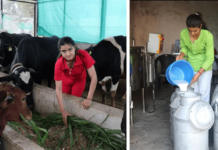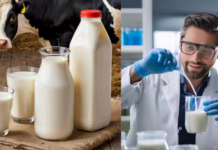Dublin, September 25, 2020: The “A2 Milk Market – By Form, By Distribution Channel, and By Region – Global Industry Perspective, Comprehensive Analysis, and Forecast, 2020 – 2026” report has been added to ResearchAndMarkets.com’s offering.
Beta-casein (BC) is also referred as -casein is a phosphoprotein. Moreover, the milk of the cow contains both A1 and A2 Forms of beta-casein protein. In addition to this, A1 beta-casein and A2 beta-casein are the genetic variants of beta-casein milk protein. Apart from this, gastrointestinal digestion of the -casein A1 protein yields opioid peptide beta-casomorphin 7 (BCM7) due to presence of His67. However, the probability of occurrence of BCM7 in A2 beta-casein is very low. The release of BCM7 results in negative gastrointestinal effects due to milk intake and can also cause lactose intolerance in subjects. This, in turn, has enhanced the demand for A2 Milk globally in the recent years.
Market Growth Dynamics
In 2016, a study was conducted by NIH researchers on forty-five Han Chinese people for fourteen days. During the clinical trials, subjects were asked to consume milk containing both beta-casein A1 and A2 Forms as well as the milk containing only A2 beta-casein protein.
Furthermore, it was observed that the intake of milk having both A1 & A2 beta casein proteins resulted in aggravation of the PD3 symptoms in subjects along with high proportion of gastrointestinal inflammation due to high concentration of BCM7 as a result of A1 -casein presence. The milk containing combination of both A1 & A2 beta-casein also created delayed gastrointestinal transit period and reduced cognitive processing speed.
Moreover, the intake of A2 milk only did not increase PD3 symptoms in subjects nor resulted in gastrointestinal inflammation & lactose intolerance. Thus, the clinical trials proved the significance of A2 milk consumption across the globe. This, in turn, is anticipated to enlarge the growth trajectory of the A2 milk market globally over the coming years.
Another study conducted by NIH researchers in 2017 also revealed that infant formulas prepared by using A2 milk demonstrated reduced formation of BCM7 after simulated gastrointestinal digestion as compared to those found in other commercially available infant formulas. This, in turn, will chart a profitable roadmap for the A2 milk market over the years to come according to the reports published in globenewswire.com.
Asia Pacific To Contribute Remarkably Towards Overall Market Share By 2026
The regional market growth over the forecast timeframe is attributed to humongous demand for dairy items along with massive use of A2 milk in preparation of ghee, cheese, yogurt, butter, and milk powder. In addition to this, rise in the health benefits derived due to the consumption of A2 milk based products in myriad countries of Asia Pacific region will embellish the expansion of the A2 milk market in Asia Pacific over the forecasting years.
Key players profiled in the report are Dairy Farmers, A2 Milk Company Limited, MLK A2 Cow Milk, Jersey Dairy, Pura, Amul, and Fonterra.
The global A2 milk market is segmented as follows:
By Nature
- Conventional
- Organic
By Form
- Powder
- Liquid
By Packaging
- Glass Bottles
- Plastic Bottles & Pouches
- Carton Packaging
- Cans
By Application
- Infant Formula
- Dairy Products
- Bakery & Confectionery
- Milk & Milk-based Beverages
By Distribution Channel
- B2B
- B2C
By Region
- North America
- The U.S.
- Canada
- Europe
- France
- The UK
- Spain
- Germany
- Italy
- Rest of Europe
- Asia Pacific
- China
- Japan
- India
- South Korea
- Southeast Asia
- Rest of Asia Pacific
- Latin America
- Brazil
- Mexico
- Rest of Latin America
- Middle East & Africa
- GCC
- South Africa
- Rest of Middle East & Africa
For more information about this report visit https://www.researchandmarkets.com/r/g1eewu



































